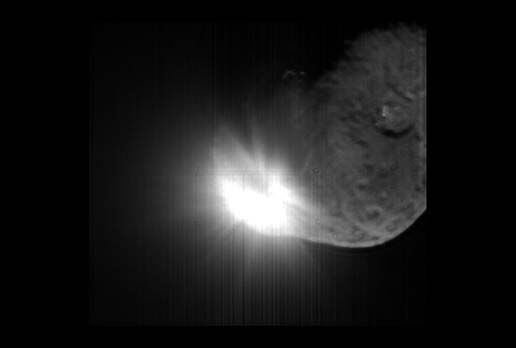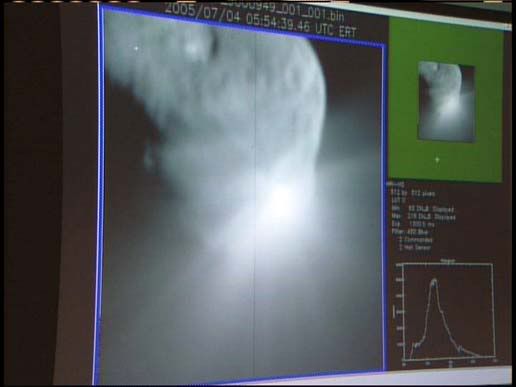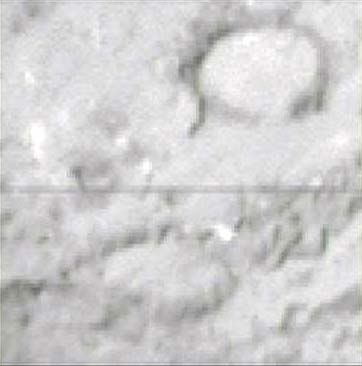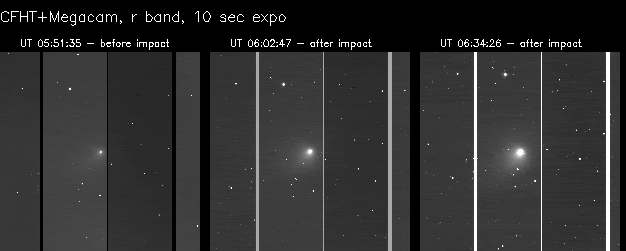I'm including several photos taken from JPL's, and NASA's websites. I include my own comments, and official captions, and credits.
The following image was taken from the surviving Deep Impact spacecraft. It shows the immediate result of the Impactor probe's high velocity encounter with comet Tempel 1. The comet is half the size of Manhattan Island, while the Impactor probe is only the size of a washing machine. Due to the velocities involved, (i.e., 23,000 mph), the explosion generated at impact was the equivalent to five tons of TNT.
Enough to create quite a show!

NASA Caption: This image (ab0ve) shows the initial ejecta that resulted when NASA's Deep Impact probe collided with comet Tempel 1 at 10:52 p.m. Pacific time, July 3 (1:52 a.m. Eastern time, July 4). It was taken by the spacecraft's high-resolution camera 13 seconds after impact. The image has been digitally processed to better show the comet's nucleus.
Image credit: NASA/JPL-Caltech/UMD
***
This next image (below) seems straight out of a science fiction movie!

NASA Caption: This image (above) from NASA TV is a view from Deep Impact's flyby showing the impactor colliding with comet Tempel 1.
Image credit: NASA/JPL-Caltech/UMD
***
The next image (below) is from Impactor moments before it slammed into Tempel 1. I love how this image makes, in my mind anyway, a very real thing-place out of what has been something previously only imagined, or seen in science fiction movies.

NASA Caption: This image (above) from NASA TV shows shows one of the last images from Deep Impact's impactor before collision with comet Tempel 1.
Image credit: NASA/JPL-Caltech/UMD.
***
In the photo (below) we see how the apparent brightness of the comet has increased (temporarily) due to the ejecta thrown off from the impact. I like this series of images as it shows the effect of what we did in space can be seen all the way back here on Earth.

Official Caption: This is a series of images (below) taken at the CFHT (Canada France Hawaii Telescope) equiped with the Megacam camera, pre- and post-impact. The images are 10s exposure time and were taken through the r filter. North is up, East is left. The field of view is about 11 x 11 arcmin, which corresponds to about 430,000 km at the comet. The increase of brightness after impact (which occurred at 05:52:24 UT as seen from Earth) is obvious on the second and third images.
Credit: J. Pittichova, Y. Fernandez, K. Meech (Institute for Astronomy, Hawaii), R. Cabanac, M.B. Laychak and P. Martin (CFHT).
***
Some may question our priorities, that is, spending money on the space program when there are so many problems here on Earth. Let me say, I believe every dollar spent on this mission was worth it. This mission shows that we can send a craft to a comet. One day, the whole of humanity may depend on our ability to nudge a comet out of a collision course with Earth. In fact it's just a matter of time.

No comments:
Post a Comment